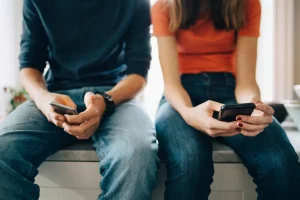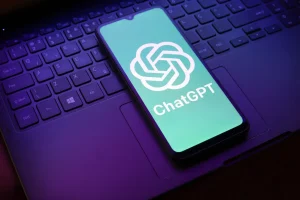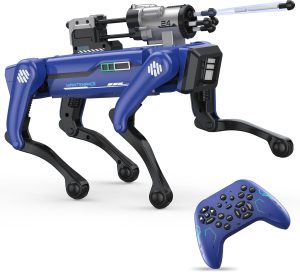The Intersection of AI and Art: A Transformative Era

In the ever-evolving world of art, the emergence of artificial intelligence (AI) is creating waves. Recently, a legal battle erupted as a group of artists took action against Google for allegedly using their work to train AI tools without their consent. This incident is just one of many, reflecting the growing tension between traditional artists and AI. While some view AI as a threat, others see it as a catalyst for a new artistic movement.
This situation mirrors the impact that photography had on art during the Impressionist era, challenging and ultimately transforming the field. Today, AI is generating everything from songs to videos at a pace impossible for humans to match. This rapid innovation is stirring both excitement and anxiety within the artistic community. Could AI be the key to unlocking a new wave of creativity, or is it poised to overshadow human talent? The following article delves into this complex relationship between AI and art, exploring the controversies, potential, and future implications.
AI Meets Art: A Clash of Creativity
Artificial intelligence (AI) is disrupting the art world, creating both excitement and fear among artists. AI can generate songs, videos, and images faster than humans ever could. Some say this technology could spark a new art movement, much like photography did for Impressionism.
Recently, a group of artists took legal action against Google for using their work to train AI tools without permission or payment. This legal battle is one of many, highlighting the growing tensions between human artists and AI. Despite the disputes, many believe a human-led artistic revolution could be on the horizon.
The Colorado State Fair Controversy
In 2022, an AI-generated image won an art prize at the Colorado State Fair, causing quite a stir in the art community. The winning artist declared, “Art is dead, dude. It’s over. AI won. Humans lost.” This statement encapsulated the frustration felt by many traditional artists.
While older artworks are often used to train AI models, living artists like Greg Rutkowski see their work replicated by AI, drowning out their original creations online. Rutkowski shared his concerns on MIT Technology Review, stating he might struggle to find his art amidst the flood of AI-generated pieces.
Artists Fight Back
Some artists are banding together to protect their work. They are asking Google to delete its copies of their art and using tools to check if their creations are in AI training datasets.
Thousands of artists have turned to the “Have I Been Trained?” tool to see if their work is part of AI datasets. Though there’s fear that AI might make artists obsolete, some argue it will make human art even more precious.
A Historical Perspective
The rise of AI in art echoes past technological disruptions. When factories began producing jewelry and tableware, the Arts and Crafts movement arose, valuing handmade items.
Even if AI can create art masterpieces, people might still prefer human-made art. Nick Bostrom, in his book ‘Deep Utopia,’ suggests that sentimental value in art cannot be automated. He notes that parents might treasure a child’s crayon drawing more than a machine-made piece.
How Artists Can Adapt
AI might not replace artists but could push them to innovate. Traditional tools like paintbrushes and chisels might become more popular, as artists seek to distinguish their work from AI creations.
Art forums on Reddit show a shift towards traditional aesthetics. Artists are sharing close-ups of brushstrokes to prove their work isn’t AI-generated. This trend underscores a growing appreciation for genuine human effort.
New art forms may emerge from this AI-human interaction, birthing an artistic era as significant as Impressionism. Art lovers may increasingly value the stories and experiences behind artworks, adding more depth to the appreciation of art.
Human Preference for Human Art
Studies indicate that people often prefer human-made art over machine-made pieces, even if they look identical. This phenomenon is similar to chess, where people still prefer watching humans play, despite machines being superior.
In music, for instance, it’s hard to imagine an AI song battle generating the same excitement as a human rap feud, like the one between Kendrick Lamar and Drake. There’s something inherently captivating about human creativity.
A Collaborative Future
The future of art might not be a battle between AI and humans, but a collaboration. Just as Impressionists used photography for their sketches, modern artists might use AI as a tool rather than a competitor.
AI can speed up the creative process, introduce new art forms, and challenge our notions of authorship and originality. This technological change won’t impact just painters but also filmmakers, writers, game designers, and more.
AI will redefine art and creation. It might even make us rethink what it means to be human. However, human creativity will continue to thrive, integrating AI tools to expand artistic possibilities.
Conclusion
The AI-art revolution is upon us, sparking debates and legal battles. Yet, it is also paving the way for new artistic expressions, blending human creativity with machine precision.
As AI continues to evolve, so will the art world, creating an interplay that could redefine the boundaries of creativity and innovation.
The AI-art revolution has commenced, igniting intense debates and legal conflicts. Yet, it is also opening doors to fresh artistic expressions, merging human creativity with machine capabilities.
As AI technology progresses, so will the art world, leading to an intricate dance that could reshape the boundaries of creativity and innovation. AI-assisted art might soon become a wellspring of new ideas, blending tradition with technology in unexpected ways.





